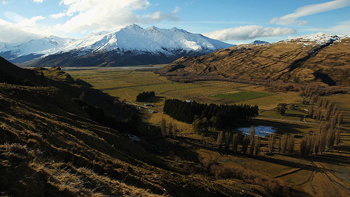
Covid-19 cases appear to be on the rise in New Zealand – and modellers say another wave is looking increasingly likely. But how large it might grow isn't so easy to predict this time around. Jamie Morton explains.
Why are modellers watching cases?
Daily-reported cases are certainly on the rise across New Zealand, with the Wellington region among places seeing the biggest bumps.
Today, the Ministry of Health reported in the last week there was 14,311 new cases of Covid-19 in the community.
This is over 3000 more than what was reported in the previous week. The seven-day rolling average of community cases has increased to 2041.
The ministry also reported a further 34 deaths and the seven-day rolling average of deaths decreased to one.
As of yesterday at midnight, there were 185 people in hospital with the virus and two people in intensive care.
University of Auckland computational biologist Dr David Welch said that, right now, there appeared to be a doubling in case numbers happening at a rate of every three to four weeks.
"If this rate of increase kept up, it wouldn't get super high," Welch said.
"So, it's not too serious yet, but we know that case numbers can accelerate sometimes - which can indicate it's being driven by new variants."
Modellers have been warning another Omicron wave could come on the back of large waves being observed in the Northern Hemisphere.
Along with case and hospitalisation trends, Welch said it would be important to keep a close eye on any trends coming out of wastewater surveillance and whole genome sequencing in the community.
What makes this wave tougher to forecast?
It's fair to say we're looking at our most complex Covid-19 wave yet.
Driving factors range from looser border measures and relaxed masking requirements to waned immunity and a mix of new subvariants that scientists are trying to keep up with.
Mitigating factors include a high level of boosting and vaccination, but also a high level of prior exposure: modellers estimate as much as two thirds of the population has now been exposed.
"I'd be very cautious about predicting anything at the moment," Welch said.
"What we're seeing might be mainly down to protections being lifted. If it's being driven by new variants, then this could be a kind of 'pre-bump' before we get the real wave."
Covid-19 modeller Professor Michael Plank agreed the size of the wave was "highly uncertain".
It might be on a par with our winter wave, or smaller, if more people being outdoors in warming temperatures made it harder for the virus to spread.
"Or it could be more prolonged if some of faster-growing lineages take hold."
What are those lineages doing at the moment?
As at the end of last month, BA.5 - which pushed daily case numbers past the 10,000 mark in our winter wave – was still the dominant Omicron subtype.
But the proportion of newer lineages BA.2.75 (10 per cent) and BA.4.6 (15 per cent) had shot up quickly, and these were expected to surpass BA.5 in New Zealand within weeks.
Then, last week, the country recorded its first confirmed case of BQ.1.1, which appeared to have a particular growth advantage relative to BA.5.
ESR's bioinformatics and genomics lead, Dr Joep de Ligt, said current estimates put that advantage at about 12 to 14 per cent – which was greater than the edge that BA.5, and BA.2 before, had over their own predecessors.
European countries like Austria had now seen waves grow larger than their previous ones within weeks, he said.
"What is also becoming clearer is that these waves are driven by a variety of new variants, most of them descendants from our previous waves," he said.
"Because these waves were not met by strong public health action they have been given the opportunity to spread and evolve into these new forms."
Otago University evolutionary virologist Dr Jemma Geoghegan said reinfection was a particular factor with BA.1.1 - and it appeared it packed the right constellation of mutations to better evade existing immunity.
"That's what's been going on overseas, and that's why we're watching it very closely here."
Will these waves become a pattern?
Plank felt we'd reached a stage of the pandemic where Covid-19 waves occurred in a cycle.
"These waves recede when enough immunity has built up from a combination of vaccination and prior infection," said Plank, of Covid-19 Modelling Aotearoa.
"But over time that immunity wanes and the virus evolves to bypass it, allowing the cycle to start again.
"This is an inevitable cycle in a respiratory pathogen that is becoming endemic."
Plank felt our best tools to mitigate it remained vaccines – although the Government has no immediate plans to roll out bi-valent boosters as other countries have – and treatments like antiviral pills, to reduce risk of severe illness.
"Many countries including Australia are now deploying updated Omicron vaccines to strengthen and broaden immunity, particularly in high-risk groups."
What about the impacts?
While data here and in other countries has pointed to a decreasing trend of mortality rates over time, experts have warned that another wave could inevitably cause another bump in Covid-19 deaths.
The ministry reported a further 34 deaths in the past seven days.
Of these, nine were from Auckland region, four were from Waikato, two were from Taranaki, one was from MidCentral, six were from Wellington region, one was from Nelson Marlborough, six were from Canterbury, five were from Southern.
One was in their 40s, three were in their 50s, two were in their 60s, nine were in their 70s, 12 were in their 80s and seven were aged over 90. Of these people, 16 were women and 18 were men.
Professor Michael Baker said the daily death rate over eight months of Omicron peaks and troughs averaged out to 8.5 - and if another wave staggered that rate, a basic calculation pointed to hundreds' more people dying before 2023.
Whether that actually happened, of course, hinged on a range of factors: new variants among them.
Baker also singled out the oft-overlooked risk of people developing Long Covid, thought to accompany at least six per cent of cases.
"Assuming 50 per cent of adults in New Zealand have had Covid-19 infection, then that could add up to at least 120,000 people with long Covid or 3 per cent of the adult population."
University of Auckland immunologist and Long Covid researcher Dr Anna Brooks said there were still many big unknowns about the condition – and stressed that any infection posed a risk to any person, regardless of their age or vaccination status.
"Vaccinations are not enough, and we all need to be mindful of getting infected: that's the hard message to get across to everyone right now."
Take your Radio, Podcasts and Music with you









